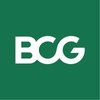Filter interviews by
Clear (1)
Bain & Company Management Consultant Interview Questions and Answers
Bain & Company Management Consultant Interview Experiences
1 interview found
Its random case discussion
Presentation to solve a case
A multidimensional case
(2 Questions)
- Q1. Who are you and what do you bring?
- Q2. Why you want to join bain?
Interview Preparation Tips
Top trending discussions






Interview questions from similar companies

I applied via Naukri.com and was interviewed before Apr 2021. There were 2 interview rounds.
(3 Questions)
- Q1. Spring container and beans
- Q2. Annotations used in Springboot
- Ans.
Annotations are used in Springboot to simplify configuration and reduce boilerplate code.
Annotations are used to define the behavior of Spring components
They can be used to define the scope of a bean, inject dependencies, and handle exceptions
Some commonly used annotations include @Component, @Autowired, and @ExceptionHandler
- Q3. Java 8 New Features and explanation
- Ans.
Java 8 introduced several new features including lambda expressions, streams, and default methods.
Lambda expressions allow for functional programming and simplify code.
Streams provide a way to process collections of data in a functional style.
Default methods allow for adding new methods to interfaces without breaking existing implementations.
Other features include the Optional class, Date and Time API, and Nashorn Java
(1 Question)
- Q1. What is your expected package
Interview Preparation Tips
Skills evaluated in this interview

I applied via Naukri.com and was interviewed before Feb 2021. There were 2 interview rounds.
(1 Question)
- Q1. Questions on Salesforce Basics. One can learn all great features in Salesforce.com but we must know the basic admin functionalities and features in Saleforce.
(1 Question)
- Q1. The questions will be on your career, Resume. They will look for story telling skills, can you be a team player and individual player, etc. Can be technical as well.
Interview Preparation Tips

I applied via Campus Placement and was interviewed before Feb 2021. There were 2 interview rounds.

Focus on industry-specific nuances
Interview Preparation Tips

I applied via Naukri.com and was interviewed before May 2021. There were 2 interview rounds.

Coding questions will be given
Interview Preparation Tips

I was interviewed before Sep 2021.
(1 Question)
- Q1. Regression and classification
Interview Preparation Tips

I was interviewed before May 2021.

Quant, reasoning, English
(1 Question)
- Q1. Java/C language questions
(1 Question)
- Q1. About your self questions
Interview Preparation Tips
Respect time of others

I applied via Referral and was interviewed before Mar 2021. There were 4 interview rounds.
Aptitude was quite Simple, They wont ask you difficult category questions.
(1 Question)
- Q1. Technical round was quite interes and long too, I have been in interview room for almost 40+ minutes. They asked me about Java, database, Linux my collage project and some brainstorming questions.
After technical round we have got a subject to write maximum 300 words on it.
here they checked about how we good at grammer and sentence framing.
I cracked this round easily and selected for HR Round
(4 Questions)
- Q1. What are your strengths and weaknesses?
- Q2. Where do you see yourself in 5 years?
- Q3. Tell me about yourself.
- Q4. Why Capgemini? What are your short term goals? What are your long term goals?
Interview Preparation Tips
- Core Java
- ooos
- SQL
- Linux basics
- C
- C++
I must say, go with the capgemini when you feel you got good compensation.
Best of luck for your future…😊

I applied via Naukri.com and was interviewed before Aug 2021. There were 2 interview rounds.
Standard Coding questing
(1 Question)
- Q1. Core java, java 8 features, collections, Exception handling
Interview Preparation Tips

I applied via Naukri.com and was interviewed before Dec 2020. There were 3 interview rounds.
Interview Questionnaire
1 Question
- Q1. Rest API, Java 8 Stream
Interview Preparation Tips
Bain & Company Interview FAQs
Recently Viewed
Tell us how to improve this page.
Bain & Company Interviews By Designations
- Bain & Company Consultant Interview Questions
- Bain & Company Analyst Interview Questions
- Bain & Company Associate Consultant Interview Questions
- Bain & Company Senior Associate Interview Questions
- Bain & Company Business Analyst Interview Questions
- Bain & Company Associate Interview Questions
- Bain & Company Project Lead Interview Questions
- Bain & Company Software Engineer Interview Questions
- Show more
Interview Questions for Popular Designations
- Management Trainee Interview Questions
- Management Staff Interview Questions
- Management Executive Interview Questions
- Construction Management Interview Questions
- Sales Management Trainee Interview Questions
- Senior Manager Project Management Interview Questions
- Management Trainee Marketing Interview Questions
- Project Management Officer Interview Questions
- Show more
Bain & Company Management Consultant Interview Process
based on 2 interviews
Interview experience
Management Consultant Interview Questions from Similar Companies
Fast track your campus placements
|
Associate
670
salaries
| ₹0 L/yr - ₹0 L/yr |
|
Senior Associate
307
salaries
| ₹0 L/yr - ₹0 L/yr |
|
Project Lead
278
salaries
| ₹0 L/yr - ₹0 L/yr |
|
Senior Associate Consultant
251
salaries
| ₹0 L/yr - ₹0 L/yr |
|
Consultant
191
salaries
| ₹0 L/yr - ₹0 L/yr |

BCG

McKinsey & Company

Deloitte

KPMG India
- Home >
- Interviews >
- Bain & Company Interview Questions >
- Bain & Company Management Consultant Interview Questions
















